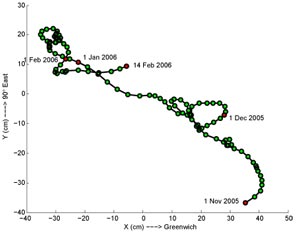Human activity over the centuries has depleted 90% of marine species, eliminated 65% of seagrass and wetland habitat, degraded water quality 10-1,000 fold, and…
The survey of a previously unexplored region in March 2006 by scientists from Conservation International and its partners documented a much greater variety of…
“The global warming influence provides a new background level that increases the risk of future enhancements in hurricane activity,” Trenberth says. The…

Earth's irregular, shorter term wobbles, lasting a week or so, have been more difficult to study, partly because these motions are usually masked by those of…
An updated map of the sea surface temperature (SST) of the world's largest inland sea is generated every day as part of ESA's Medspiration project, with an…
“The global warming influence provides a new background level that increases the risk of future enhancements in hurricane activity,” Trenberth says. The study…